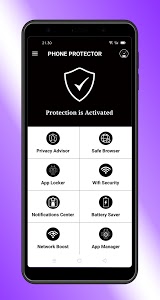Screen capture techniques and basic specialized issues

A screen capture, otherwise called screen catch, or screen get, is a computerized picture that shows the substance of a PC and prevent screenshots on android . Screen capture is made by the working framework or programming running on the gadget driving the presentation.
Screen capture techniques:
- Computerized techniques
The first screen captures were made with the principal intuitive PCs around 1960.[ Through the 1980s, PC working frameworks didn’t generally have underlying usefulness for catching screen captures. Some of the time text-no one but screens could be unloaded to a book record, yet the outcome would just catch the substance of the screen, not the appearance, nor were illustrations screens preservable along these lines. A few frameworks had a BSAVE order that could be utilized to catch the space of memory where screen information was put away, yet this necessary admittance to a BASIC brief. Frameworks with composite video yield could be associated with a VCR, and whole screencasts protected thusly.
Most screen captures are raster pictures, yet some vector-based GUI conditions like Cairo are equipped for producing vector screen captures.
- Photographic techniques
Screen capture packs were accessible for standard cameras that incorporated a long enemy of the intelligent hood to append between the screen and camera focal point, just as a closeup focal point for the camera. Polaroid film was famous for catching screen captures, on account of the moment results and close-centering ability of Polaroid cameras. In 1988, Polaroid presented Spectra film with a 9.2 × 7.3 picture size fitter to the 4:3 viewpoint proportion of CRT screens.
Regular specialized issues:
Equipment overlays

On Windows frameworks, screen captures of games and media players at times come up short, bringing about a clear square shape. The justification for this is that the illustrations are bypassing the ordinary screen and going to a high-velocity design processor on the design’s card by utilizing a strategy called equipment overlay. By and large, it is highly unlikely to separate a processed picture back out of the design’s card, however, programming may exist for uncommon cases or explicit video cards.
One way these pictures can be caught is to kill the equipment overlay. Since numerous PCs have no equipment overlay, most projects are worked to work without it, only a tad slower. In Windows XP, this is debilitated by opening the Display Properties menu, tapping on the “Settings” tab, clicking, “Progressed”, “Investigate”, and moving the Hardware Acceleration Slider to “None.”
Free programming media players may likewise utilize the overlay yet regularly have a setting to stay away from it or have committed screen capture capacities.
Screen recording
A screencast is a computerized recording of PC screen yield, otherwise called a video screen catch or a screen recording, frequently containing sound portrayal. The term screencast contrasts and the connected term screen capture; while screen capture produces a solitary image of a PC screen, a screencast is a film of the progressions after some time that a client sees on a PC screen, that can be improved with sound portrayal and inscriptions.
The screen recording ability of some screen catch programs is an efficient method to make guidelines and introductions, yet the subsequent documents are regularly huge.
A typical issue with video accounts is the activity bounces, rather than streaming easily, because of the low casing rate. Even though getting quicker constantly, normal PCs are not yet quick enough to play recordings and all the while catch them at proficient edge rates, for example, 30 edge/s. For some cases, high casing rates are required for a charming encounter.
